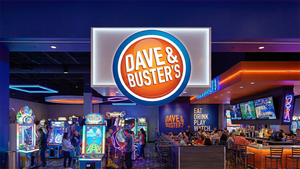(BPT) - Epilepsy at any age can be challenging to navigate, even more so when a patient is a young child or teen. Some medications can help manage seizures for many patients. However, one-third of children with newly diagnosed epilepsy fail the first antiseizure medication they were prescribed. These patients may experience seizures even when taking their medications as prescribed.
The impact of seizures on children and teens
Seizures may be a frightening experience for a child. When their symptoms can't be controlled by medication, pediatric patients with seizures can develop lifelong challenges.
'I've witnessed firsthand the negative impact seizures can have on the quality of life of children and teens,' said Sunita Misra, M.D., Ph.D., and chief medical officer at SK Life Science, a company that develops treatments for seizure disorders.
During her career, Dr. Misra has cared for drug-resistant pediatric epilepsy patients. 'When traditional medications are unsuccessful in managing seizures, young patients and their families must contend with health challenges that affect a child's ability to thrive academically, socially and emotionally," explained Dr. Misra.
For young children, seizures may disrupt a child's brain development, which can lead to a serious impact on their lives. According to the Epilepsy Foundation, seizures can stymie a child's academic achievements and lead to emotional and behavioral issues.
Also, because seizures aren't predictable, a child may experience anxiety and distress, preventing them from fully engaging in school and social activities. The unpredictability can also be challenging for caregivers to maintain jobs, impacting the financial well-being of families, which can cause more anxiety for a child and their loved ones.
Teens living with seizure disorders can feel left out when it comes to adolescent milestones. For example, getting a driver's license is a rite of passage, representing independence, maturity and freedom. Adolescents contending with uncontrolled seizures generally cannot obtain their license, which can make them feel left out, isolated from their peers and dependent on others.
How clinical trials may help
Researchers are constantly conducting studies to try to develop new or improved treatments that can address the unmet needs of pediatric patients living with seizures.
For example, SK Life Science is currently enrolling patients in three clinical trials investigating a potential treatment for teens with primary generalized tonic-clonic (PGTC) seizures and young children with partial-(focal) onset seizures.
The PGTC clinical trial is a global Phase 3 study activated in the U.S. as well as 11 other countries. This trial recruits pediatric patients between the ages of 12 and 17 who continue to have PGTC seizures despite traditional medications.
The remaining two trials focus on pediatric partial-onset seizures. The Phase 1 trial is an open-label pharmacokinetics study that is currently recruiting patients between the ages of 2 to 5 in the U.S., South Korea, Hungary and Spain. Meanwhile, the Phase 3 trial is an open-label safety study also recruiting in the U.S., South Korea, Hungary and Spain, as well as Australia and Poland.
'At SK Life Science, we are currently working to provide alternatives for younger patients,' said Dr. Misra. 'If you are a parent of an adolescent diagnosed with PGTC or of a toddler or young child with partial-onset seizures, you may want to speak with your doctor to see if your child can participate in these trials.' To learn more, visit www.sklifescienceinc.com.






